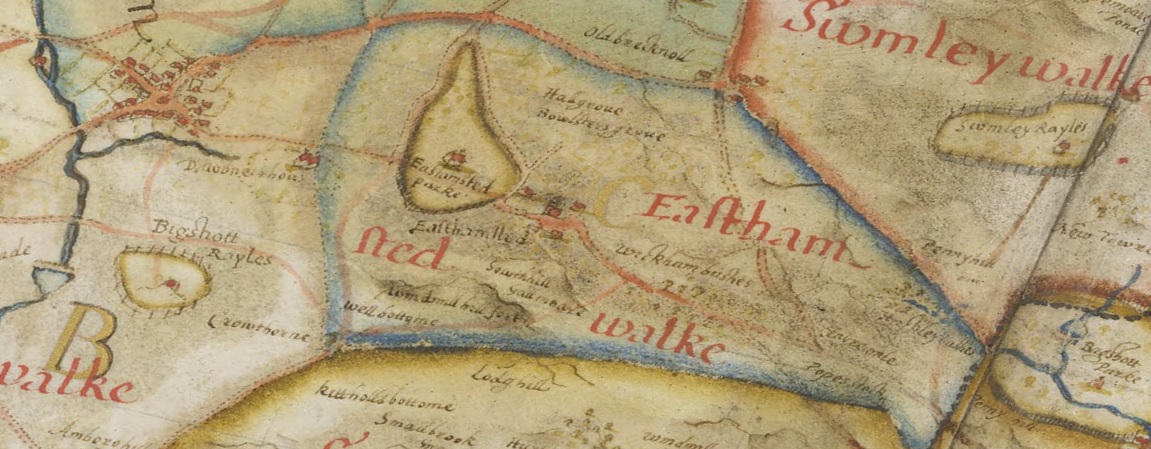
A Christian presence in the community for over 900 years.
Early Origins
The origin of the church is shrouded in mystery. What can be certain is that Easthampstead parish was given as a gift by Edward the Confessor to Westminster Abbey in or around 1060. Edward was an Anglo-Saxon English king and saint. It is presumed a Church or small Chapel may have existed at this time, although the population was around 20 adults.
The Church in Easthampstead is first specifically mentioned in 1159 when Lawrence, the Abbot of Westminster, granted 'the church of Jezhamstede' to Hurley Priory. This was a Benedictine priory in the village of Hurley. It was founded in 1086 by the Norman magnate Geoffrey de Mandeville as a cell of Westminster Abbey. In 1159, Lawrence instructed that Hurley should use the income from Easthampstead 'so that they may observe and venerate the Festival of the Blessed Saint Edward the Confessor'.
The Church in Easthampstead is then mentioned in an order from 1176 in which Ralph de Arundel, Prior of Hurley Abbey, ordered that Easthampstead Church shall pay a yearly pension to the Abbey for the provision of wax tapers for the mass of Our Lady. This payment continued until the Reformation. Later, in 1386, the Abbey's support continued with another request that Easthampstead provide money to supply clothing and other essentials.
It is clear from this time the Church was dedicated to St Mary, although later for reasons unknown the name changed at some point in history to St Mary Magdalene.
BBC Bitesize - find out more about this period
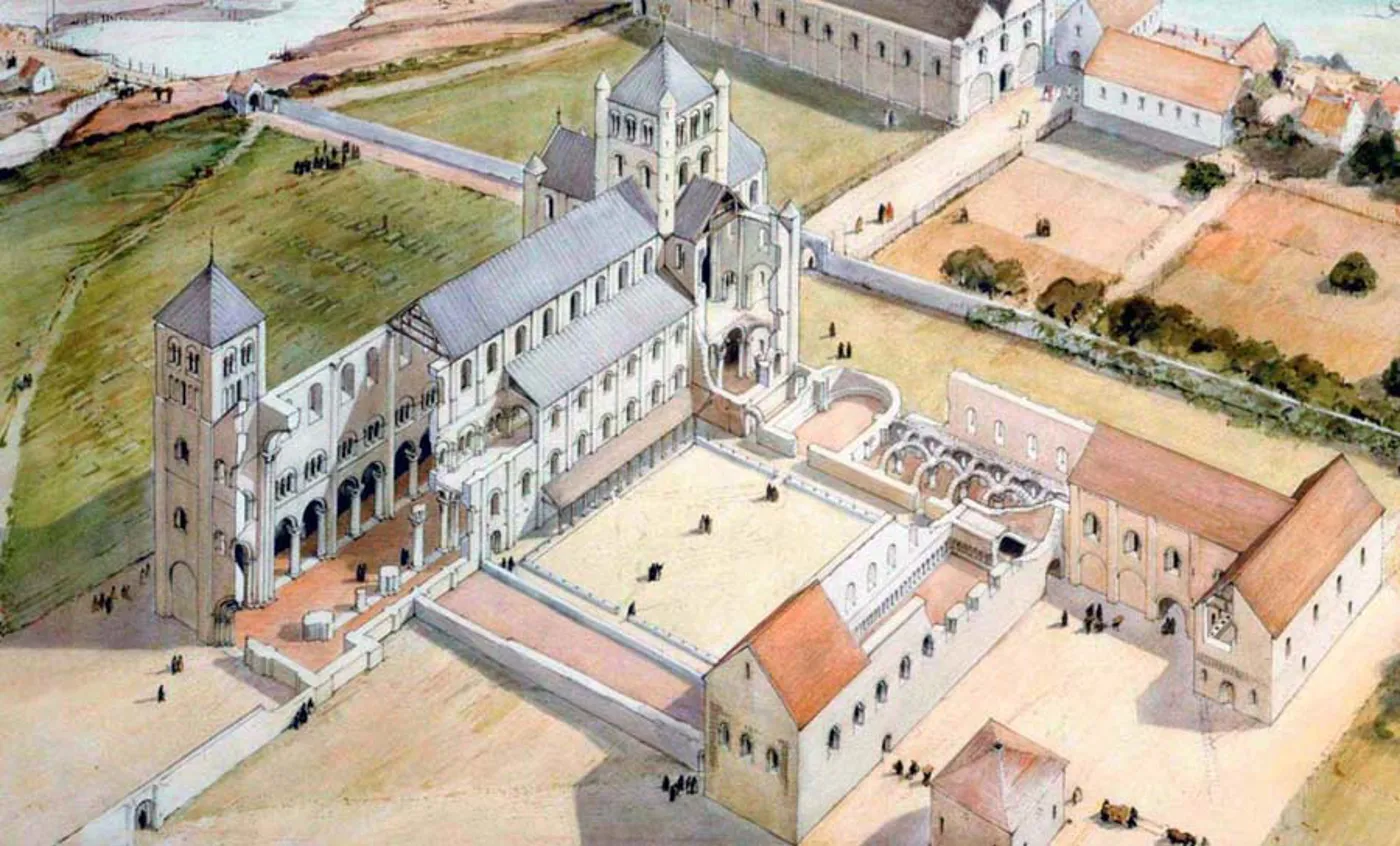
(Westminster Abbey as it looked during this period)

(Hurley Abbey as it looks today)
Dissolution ↑
Between 1536 and 1540, on the orders of Henry VIII, every abbey and priory in England – about 800 in total – was dissolved or forcibly closed. In 1536 Hurley Priory was amongst the first to be closed by Henry VIII. Henry passed ownership of Easthampstead back to Westminster Abbey. However, in 1540 Westminster Abbey was itself dissolved. This would have thrown the monastic tenant farmers in Easthampstead into disarray. Services would also have been disrupted at the Church as the Abbey had been responsible for providing priests.
With the dissolution of the monasteries the manor and patronage of the church of Easthampstead was passed to Charles Howard, sister to Queen Catherine Howard, fifth wife of Henry VIII. Henry had used Easthampstead Park as a Royal Hunting Lodge, as had many of his predecessors.
The patronage of the Church in Easthampstead then was transferred along with the manor of Hurley to John Lovelace, who purchased it in 1545 at the font of St Paul’s Cathedral in London. It passed through many others possession until eventually it passed into the hands of William Trumbell in 1696.
BBC Bitesize - find out more about this period
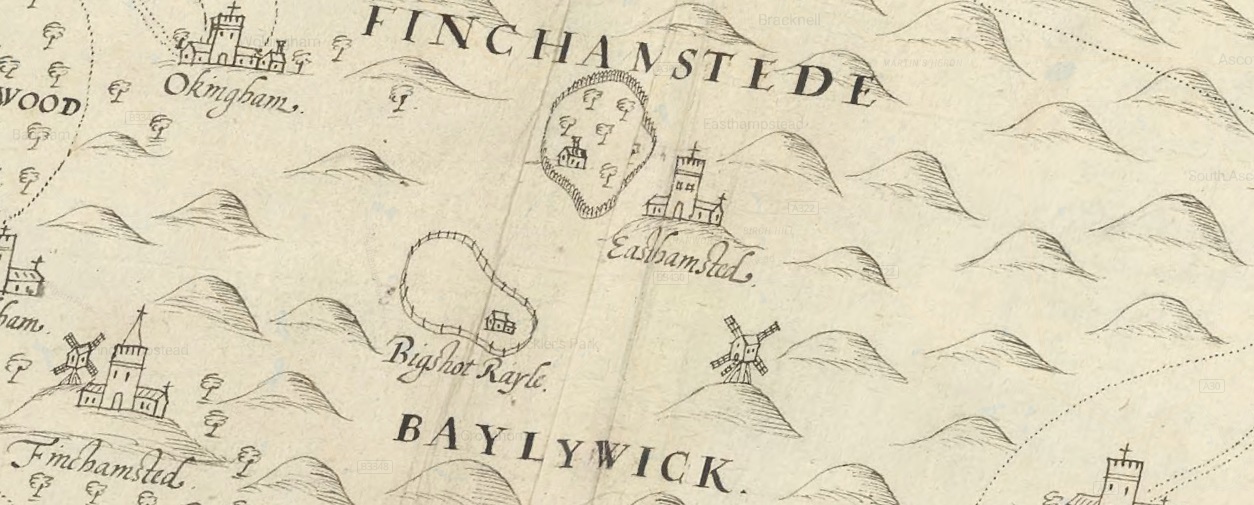
(This map belonged to William Cecil Lord Burghley, Elizabeth I’s Secretary of State, it shows a Church with a tower at Easthampstead)
Civil War ↑
The English Civil Wars were a series of devastating conflicts fought in the mid-17th century. They centred around a titanic struggle for power between King Charles I and Parliament, with battle lines drawn over deep-seated and complex divisions in politics, religion and economic policy. The Trumbull family at Easthampstead Park supported the parliamentarian cause.As MP for Berkshire in 1656 he even voted in favour of offering the crown to the Lord Protector Oliver Cromwell.
Yet something of a mystery exists. During the Civil War Royal Crests were removed from Churches and destroyed. Easthampstead would have been no different. Yet someone in Easthampstead with Royalist sympathies removed the crest and kept it safe until the restoration of the monarchy in 1660. At which point it was rehung in the church after someone painted over the royal crest with the date 1660. Who was this secret Royalist?
Certainly not the Rector at the time. Revd John Brice was asked in 1662 to swear an oath of allegiance to the King and refused. Brice was among thirty clergy who were ejected from their churches by the Act of 1660 or the Act of Uniformity in 1662. Brice being ejected on the 12th November 1662. Together with his father William Brice, the ejected rector of Henley, preached for a while in Colnbrook before relocating to Maidenhead and forming the Congregational Church.
BBC Bitesize - find out more about this period
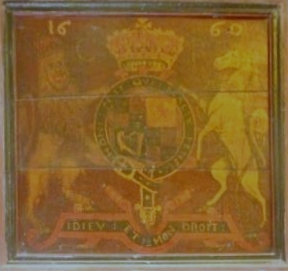
(The Royal Crest at Easthampstead Parish Church)
The Waltham Blacks ↑
In the early decades of the 18th century many people found themselves in a state of poverty. In October 1721, sixteen poachers, known as the Waltham Blacks, took part in a poaching raid on the Bishop of Winchesters lands taking and killing deer. They also stole a shipment of the Kings wine.
Newspaper reports of the group describe them as attacking the Keeper of Windsor Forest, shooting his son and carrying off the King’s deer. Those Waltham Blacks who were arrested and conveyed to Reading gaol for trial in the summer of 1723 were not tried for sedition, but for murder, deer stealing and assault.
On 24 April 1723, Revd Thomas Power, Curate at Easthampstead, was indicted at the Quarter Sessions for ‘a Riott and other misdemeanours … guilty of Treasonable Practices against the King and Government in aiding and abetting the raising of forces for ye bringing in ye person called King James the Third and other treasonable acts’. Lady Trumbull was outraged that Revd Thomas Power had behaved in such a manner that she petitioned for the Bishop to remove him. Rector of Easthampstead at the time was Revd John Power who was Thomas’ father.
However unbeknownst to Lady Trumbull the government in response to what the Waltham Blacks were doing had decided to send an agent, namely ‘our Trusted and well beloved’ Revd. Thomas Power, to investigate and to ‘penetrate into the bottom of their treasonable intentions’. He was to be given royal authority to do so and to be indemnified for any actions he would have to undertake. Thomas had infiltrated the group and had led soldiers to search a premises and arrest members of the gang. The gang in turn accused him of treason and he was tried, however as he was acting under Royal authority and could prove it, he was released and pardoned.
This gang caused the introduction of the Waltham Black Act in 1723, otherwise known as the Bloody Code, which sadly imposed the death penalty for over two hundred, often petty, offences.
Thomas and John Power unsurprisingly sold the patronage. Christ Church College, Oxford, decided to purchase it out of 'Fell's bequest for the purchase of patronages.' From this date it has remained with the college.
BBC Bitesize - find out more about this law
Care for the poor and sick ↑
Three almshouses were originally built in the name of William Watts opposite the Church in 1760. A local story has it that the clock-tower on top of the houses was donated by a local dignitary and that he had origionally intended to make the donation of the clock to the church. However a branch of the ancient yew tree at the front of the church was regularly knocking his hat off. He asked the church to cut the branch but they refused and defended the rights of the ancient tree said to be over 1,000 years of age.
Local parishes struggled to care for the poor and so on the 27th July 1835 the Easthampstead Poor Law Union was formed with Easthampstead, Binfield, Sandhurst, Warfield, Winkfield with Ascot and later Crowthorne. A board of guardians was formed and they set about building opposite the church a workhouse, adapting the former almshouses.
In the 1900's a cottage home for pauper children was established by the union and in the 1930's it was taken over by Berkshire County Council to become a Public Assistance Institution. Later with the establishment of the NHS in 1948 it became Church Hill Hospital. Part of the later hospital buildings were demolished in 1999 and developed as a housing estate with the Victorian building retained.
BBC Bitesize - find out more about the poor law

(Location of almshouses and later the workhouse)
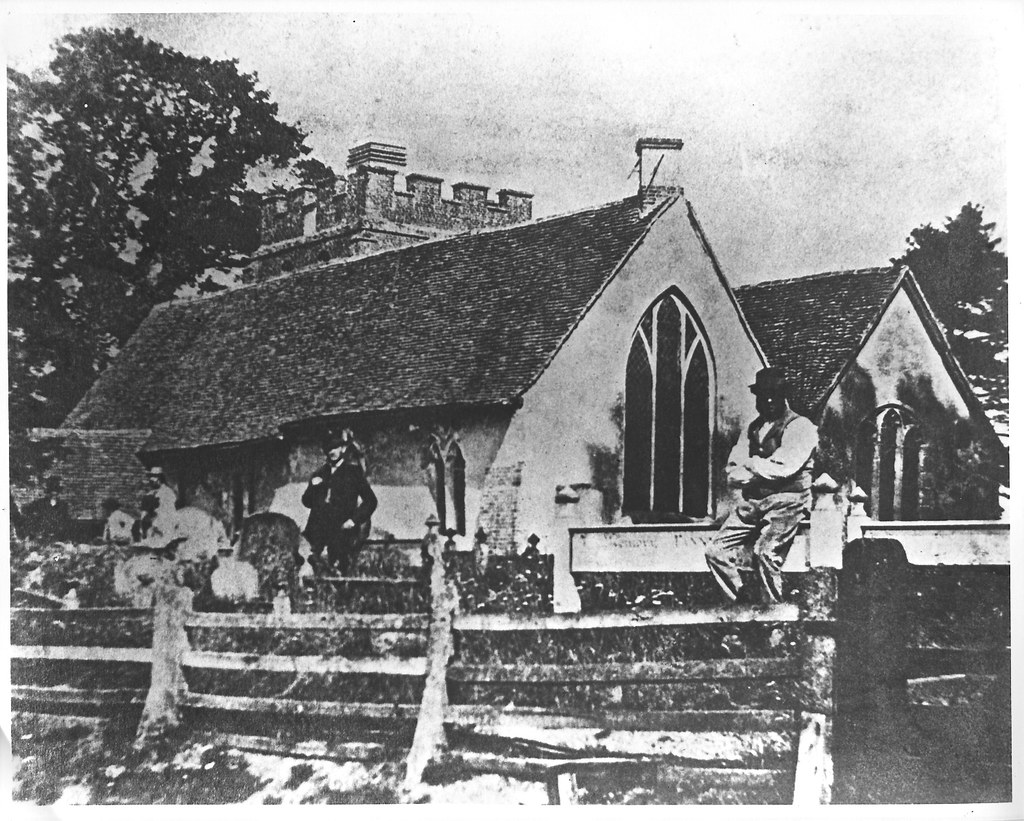
(Taken 1863)
Osborne Gordon ↑
Several Rectors were appointed by Christ Church, one of which was Revd Osborne Gordon. At the age of forty-seven Gordon became rector of the church of St Michael and St Mary Magdalene, Easthampstead, Berkshire in 1860, succeeding the Revd Abraham Boyle Townsend. Although he appears to have not left Oxford until April 1861.
Townsend had knocked down the Rectory in 1836 deeming it unliveable and so Gordon had to first build a new one, which he did in 1863. This house would be later knocked down and the tower block Point Royal was built on its site, the green space around the tower being what remains of the Rectory gardens.
Townsend, renowned for his sharp tongue, had developed a hostility with his neighbour and wealthy landowner, the fourth Marquis of Downshire. This meant that Townsend was not able to secure funds to repair and maintain the Church. Gordon’s charm, sensitivity, diplomacy and common sense were needed to diffuse the situation. He succeeded and together with Lady Caroline, Marchioness of Downshire he arranged for the complete rebuilding of the church in 1867, and chose a London architect, J. W. Hugall for the task. He designed the new Church in the style of Victorian Gothic revival using stone throughout and retaining only the former tower, which was extended. It was rededicated as the Church of St Mary Magdalene and St Michael, later the saints names were swapped around.
Gordon was also concerned about the poverty of his parishioners, their increasing numbers, and the lack of a proper school and facilities. On the 21st June 1872 a deed was granted to Gordon and his successors a piece of land near to the church on which a Church School was to be built. This was the foundation of St Michael's Church of England School which still exists to this day. The school trust which was formed in 1872 still exists to this day and still supports the school in its work.
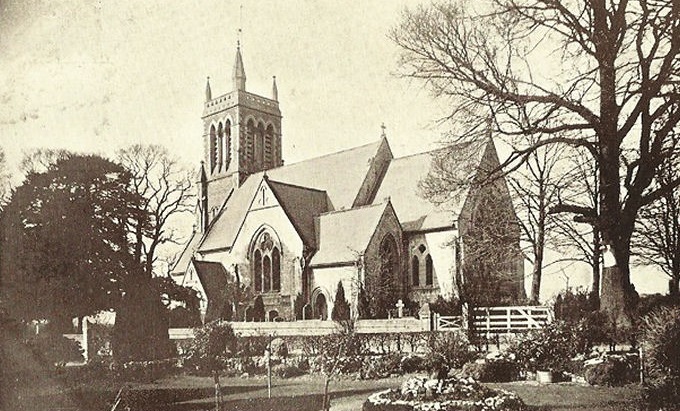
(Taken 1901)
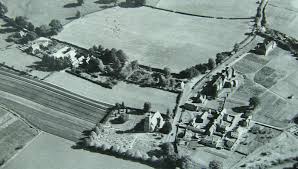
(Taken c.1950, you can see the Church, Workhouse and School)
The New Town ↑
Bracknell was designated a new town on 17 June 1949, in the aftermath of the Second World War. Bracknell was chosen as a New Town because it was close to London, had a railway station, motorway links, and was outside of London's green belt. In 1971 the population in Easthampstead parish was approximately 209 and it was rural, however today it is approximately 32,000 and suburban. In response to the increasing development the parish Church constructed the Parish Centre and then the annexe to the Church.
BBC Bitesize - find out more about this period

(Taken 1960)
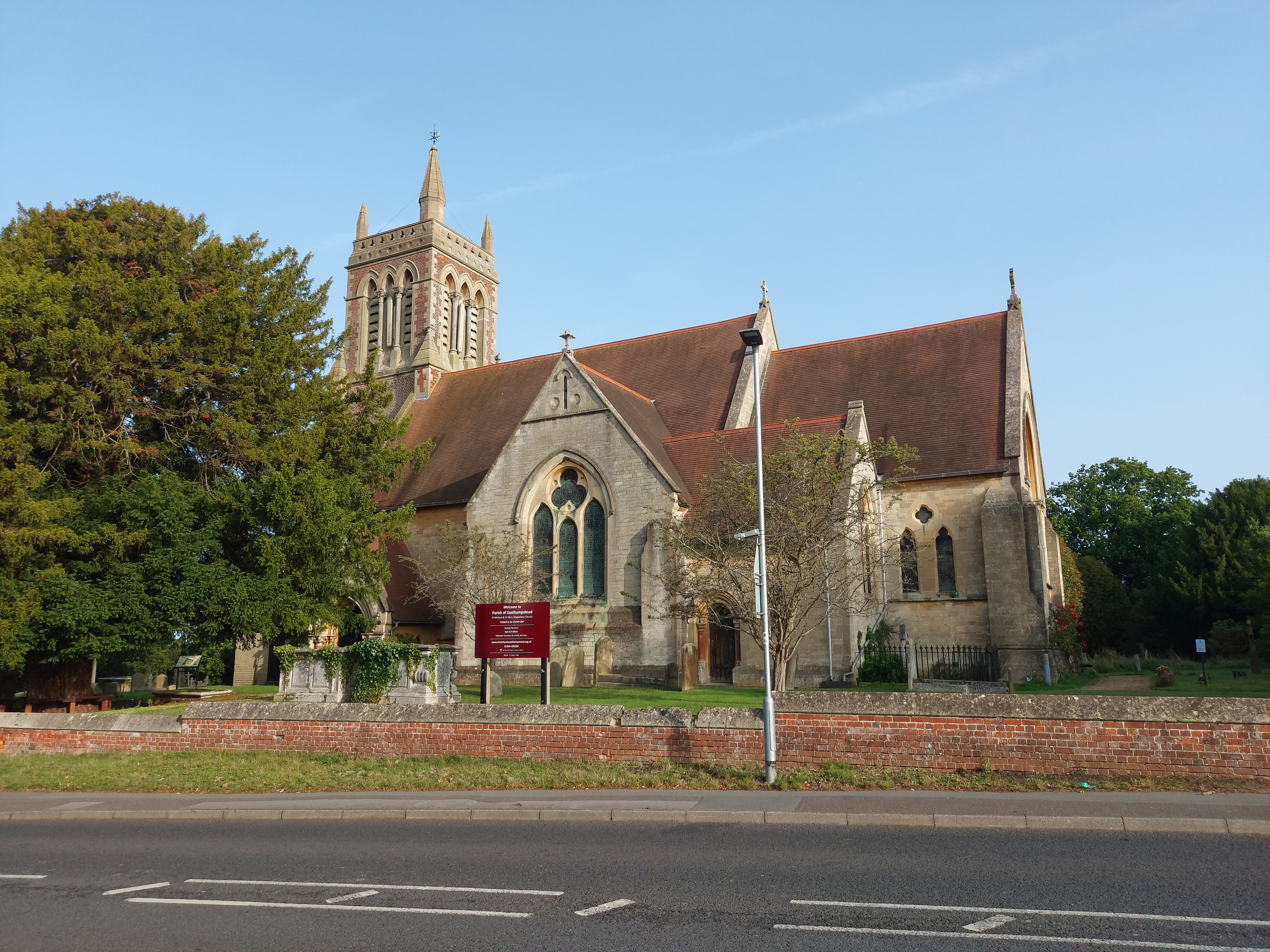
(Taken 2024)
For more information on our history, please do get in touch.
Rectors ↑
There is no record of incumbents until 1298. The current list is as follows (reigning Monarchs are listed in red for reference only):
For more information, please do get in touch.